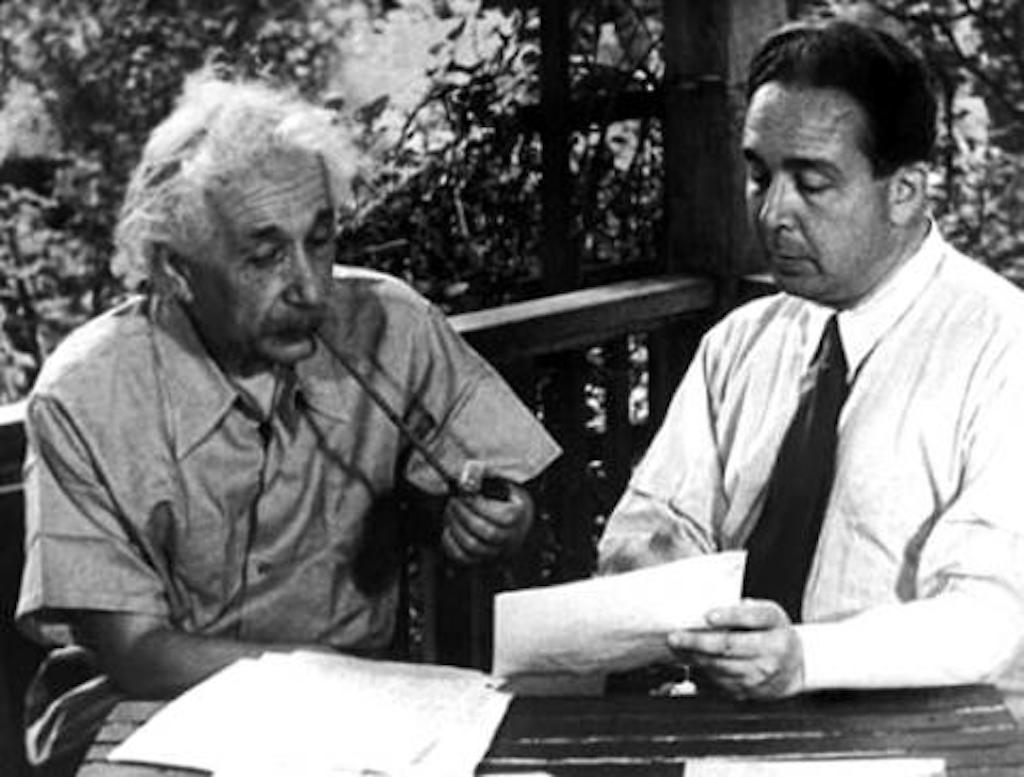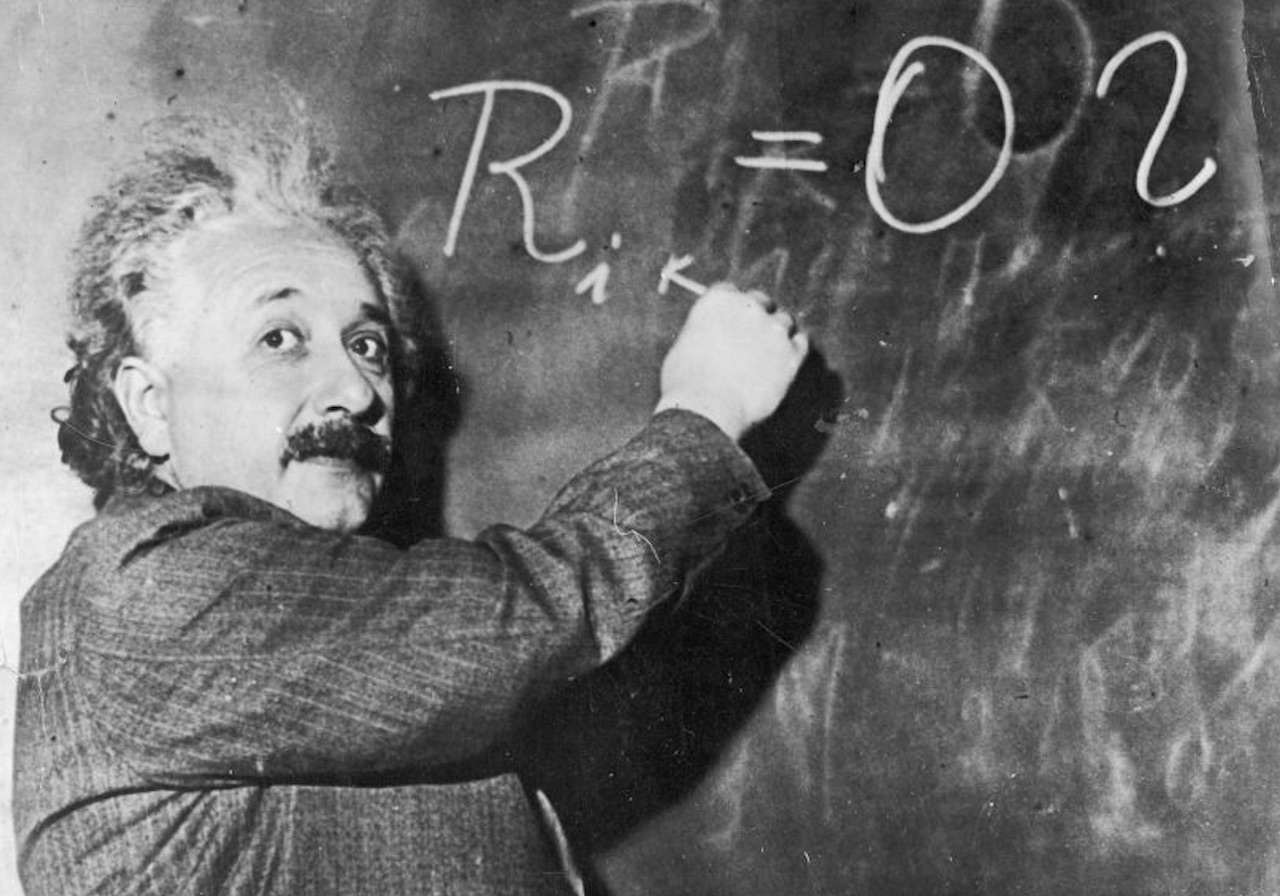Albert Einstein: His life, theories and impact on science
Where would science be without Albert Einstein?

Albert Einstein is often cited as one of the most influential scientists of the 20th century. His work continues to help astronomers study everything from gravitational waves to Mercury's orbit.
The scientist's equation that helped explain special relativity – E = mc^2 – is famous even among those who don't understand its underlying physics. Einstein is also known for his theory of general relativity (an explanation of gravity), and the photoelectric effect (which explains the behavior of electrons under certain circumstances); his work on the latter earned him a Nobel Prize in Physics in 1921.
Einstein also tried in vain to unify all the forces of the universe in a single theory, or a theory of everything, which he was still working on at the time of his death.
Related: What is the Theory of Everything?
Einstein's early years
Einstein was born on March 14, 1879, in Ulm, Germany, a town that today has a population of just more than 120,000. There is a small commemorative plaque where his house used to stand (it was destroyed during World War II). The family moved to Munich shortly after his birth, according to the Nobel Prize website, and later to Italy when his father faced problems with running his own business. Einstein's father, Hermann, ran an electrochemical factory and his mother Pauline took care of Albert and his younger sister, Maria.
Einstein would write in his memoirs that two "wonders" deeply affected his early years, according to Hans-Josef Küpper, an Albert Einstein scholar. Young Einstein encountered his first wonder — a compass — at age 5: He was mystified that invisible forces could deflect the needle. This would lead to a lifelong fascination with unseen forces. The second wonder came at age 12 when he discovered a book of geometry, which he worshipped, calling it his "holy geometry book."
Contrary to popular belief, young Albert was a good student, according to an online archive. He excelled in physics and mathematics, but was a more "moderate" pupil in other subjects, Küpper wrote on his website. However, Einstein rebelled against the authoritarian attitude of some of his teachers and dropped out of school at 16. He later took an entrance exam for the Swiss Federal Polytechnic School in Zurich, and while his performances in physics and math were excellent, his marks in other areas were subpar, and he did not pass the exam. The aspiring physicist took additional courses to close the gap in his knowledge and was admitted to the Swiss Polytechnic in 1896. In 1901 he received his diploma to teach physics and mathematics.

However, Einstein could not find a teaching position, and began work in a Bern patent office in 1901, according to his Nobel Prize biography. It was while there that, in between analyzing patent applications, he developed his work in special relativity and other areas of physics that later made him famous.
Einstein married Mileva Maric, a longtime love of his from Zurich, in 1903. Their children, Hans Albert and Eduard, were born in 1904 and 1910. (The fate of a child born to them in 1902 before their marriage, Lieserl, is unknown.) Einstein divorced Maric in 1919 and soon after married Elsa Löwenthal. Löwenthal died in 1933.
Career highlights
Einstein's career sent him to multiple countries. He earned his doctorate from the University of Zurich in 1905 and subsequently took on professor positions in Zurich (1909), Prague (1911) and Zurich again (1912). Next, he moved to Berlin to become director of the Kaiser Wilhelm Physical Institute and a professor at the University of Berlin (1914). He also became a German citizen.
A major validation of Einstein's work came in 1919, when Sir Arthur Eddington, secretary of the Royal Astronomical Society, led an expedition to Africa that measured the position of stars during a total solar eclipse. The group found that the position of stars was shifted due to the bending of light around the sun. (In 2008, a BBC/HBO production dramatized the story in "Einstein and Eddington.")
Einstein remained in Germany until 1933 when dictator Adolf Hitler rose to power. The physicist then renounced his German citizenship and moved to the United States to become a professor of theoretical physics at Princeton. He became a U.S. citizen in 1940 and retired in 1945.
Einstein remained active in the physics community throughout his later years. In 1939, he famously penned a letter to President Franklin D. Roosevelt warning that uranium could be used for an atomic bomb.
Late in Einstein's life, he engaged in a series of private debates with physicist Niels Bohr about the validity of quantum theory. Bohr's theories held the day, and Einstein later incorporated quantum theory into his own calculations.

Einstein's death
Einstein died of an aortic aneurysm on April 18, 1955. A blood vessel burst near his heart, according to the American Museum of Natural History (AMNH). When asked if he wanted to have surgery, Einstein refused. "I want to go when I want to go," he said. "It is tasteless to prolong life artificially. I have done my share; it is time to go. I will do it elegantly."
Einstein's body — most of it, anyway — was cremated; his ashes were spread in an undisclosed location, according to the AMNH. However, a doctor at Princeton Hospital, Thomas Harvey, had controversially performed an autopsy, and removed Einstein's brain and eyeballs, according to the BBC.
Harvey sliced hundreds of thin sections of brain tissue to place on microscope slides and snapped 14 photos of the brain from several angles. He took the brain tissue, slides and images with him when he moved to Wichita, Kansas, where he was a medical supervisor in a biological testing lab.
Over the next 30 years, Harvey sent a few slides to other researchers who requested them, but kept the rest of the brain in two glass jars, sometimes in a cider box under a beer cooler. The story of Einstein's brain was largely forgotten until 1985, when Harvey and his colleagues published their study results in the journal Experimental Neurology.
Harvey failed a competency exam in 1988, and his medical license was revoked, Blitz wrote. Harvey eventually donated the brain to Princeton Hospital, where the brain's journey had begun. Harvey died in 2007. Pieces of Einstein's brain are now at the Mütter Museum in Philadelphia, Live Science reported.

Einstein's remarkable brain
Harvey's 1985 study authors reported that Einstein's brain had a higher number of glial cells (those that support and insulate the nervous system) per neurons (nerve cells) than other brains they examined. They concluded that it might indicate the neurons had a higher metabolic need — in other words, Einstein's brain cells needed and used more energy, which could have been why he had such advanced thinking abilities and conceptual skills.
However, other researchers have pointed out a few problems with that study, according to Eric H. Chudler, a neuroscientist at the University of Washington. First, for example, the other brains used in the study were all younger than Einstein's brain. Second, the "experimental group" had only one subject — Einstein. Additional studies are needed to see if these anatomical differences are found in other people. And third, only a small part of Einstein's brain was studied.
Another study, published in 1996 in the journal Neuroscience Letters, found that Einstein's brain weighed only 1,230 grams, which is less than the average adult male brain (about 1,400 g). Also, the scientist's cerebral cortex was thinner than that of five control brains, but the density of neurons was higher.
A study published in 2012 in the journal Brain revealed that Einstein's brain had extra folding in the gray matter, the site of conscious thinking. In particular, the frontal lobes, regions tied to abstract thought and planning, had unusually elaborate folding.

Einstein's scientific legacy
Einstein's legacy in physics is significant. Here are some of the key scientific principles that he pioneered:
Theory of special relativity: Einstein showed that physical laws are identical for all observers, as long as they are not under acceleration. However, the speed of light in a vacuum is always the same, no matter at what speed the observer is traveling. This work led to his realization that space and time are linked to what we now call space-time. So, an event seen by one observer may also be seen at a different time by another observer.
Theory of general relativity: This was a reformulation of the law of gravity. In the 1600s, Newton formulated three laws of motion, among them, outlining how gravity works between two bodies. The force between them depends on how massive each object is, and how far apart the objects are. Einstein determined that when thinking about space-time, a massive object causes a distortion in space-time (like putting a heavy ball on a trampoline). Gravity is exerted when other objects fall into the "well" created by the distortion in space-time, like a marble rolling towards a large ball. General relativity passed a major test in 2019 in an experiment involving a supermassive black hole at the center of the Milky Way.
Photoelectric effect: Einstein's work in 1905 proposed that light should be thought of as a stream of particles (photons) instead of just a single wave, as was commonly thought at the time. His work helped decipher curious results scientists were previously unable to explain.
Unified field theory: Einstein spent much of his later years trying to merge the fields of electromagnetism and gravity. He was unsuccessful but may have been ahead of his time. Other physicists are still working on this problem.
Einstein's astronomical legacy
There are many applications of Einstein's work, but here are some of the most notable ones in astronomy:
Gravitational waves: In 2016, the Laser Interferometer Gravitational-Wave Observatory (LIGO) detected space-time ripples — otherwise known as gravitational waves— that occurred after black holes collided about 1.4 billion light-years from Earth. LIGO also made an initial detection of gravitational waves in 2015, a century after Einstein predicted these ripples existed. The waves are a facet of Einstein's theory of general relativity.
Mercury's orbit: Mercury is a small planet orbiting close to a very massive object relative to its size — the sun. Its orbit could not be understood until general relativity showed that the curvature of space-time is affecting Mercury's motions and changing its orbit. There is a small chance that over billions of years, Mercury could be ejected from our solar system due to these changes (with an even smaller chance that it could collide with Earth).
Gravitational lensing: This is a phenomenon by which a massive object (like a galaxy cluster or a black hole) bends light around it. Astronomers looking at that region through a telescope can then see objects directly behind the massive object, due to the light being bent. A famous example of this is Einstein's Cross, a quasar in the constellation Pegasus: A galaxy roughly 400 million light-years away bends the light of the quasar so that it appears four times around the galaxy.
Black holes: In April 2019, the Event Horizon telescope showed the first-ever images of a black hole. The photos again confirmed several facets of general relativity, including not only that black holes exist, but also that they have a circular event horizon — a point at which nothing can escape, not even light.
Additional resources
To find the answers to frequently asked questions about Albert Einstein, visit The Nobel Prize website. Additionally, you can learn about The Einstein Memorial at the National Academy of Sciences building in Washington, D.C.
Bibliography
"Einstein: The Life and Times". American Journal of Physics (1973). https://aapt.scitation.org/doi/abs/10.1119/1
"On the brain of a scientist: Albert Einstein". Experimental Neurology (1985). https://pubmed.ncbi.nlm.nih.gov/3979509/
"The fascinating life and theory of Albert Einstein". Mih, W. C. Nova Publishers (2000). https://books.google.co.uk/books
"Alterations in cortical thickness and neuronal density in the frontal cortex of Albert Einstein". Neuroscience Letters (1996). https://pubmed.ncbi.nlm.nih.gov/8805120/
"The cerebral cortex of Albert Einstein: a description and preliminary analysis of unpublished photographs". Brain, Volume 136, Issue 4 (2012). https://academic.oup.com/brain/article/136/4/1304/356614?login=true
Join our Space Forums to keep talking space on the latest missions, night sky and more! And if you have a news tip, correction or comment, let us know at: community@space.com.
Breaking space news, the latest updates on rocket launches, skywatching events and more!

Elizabeth Howell (she/her), Ph.D., was a staff writer in the spaceflight channel between 2022 and 2024 specializing in Canadian space news. She was contributing writer for Space.com for 10 years from 2012 to 2024. Elizabeth's reporting includes multiple exclusives with the White House, leading world coverage about a lost-and-found space tomato on the International Space Station, witnessing five human spaceflight launches on two continents, flying parabolic, working inside a spacesuit, and participating in a simulated Mars mission. Her latest book, "Why Am I Taller?" (ECW Press, 2022) is co-written with astronaut Dave Williams.
